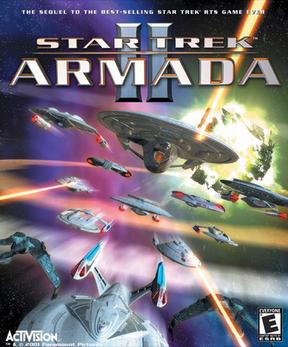
Star Trek: Armada II is a real-time strategy video game published by Activision in 2001, based upon the Star Trek universe. The game was developed by Mad Doc Software. It is the sequel to Star Trek: Armada. Star Trek: Armada II was released by Activision a year after they acquired the full rights to all the franchise holding of the video game's franchise from Viacom. It was the first of the three major Star Trek video game sequel titles that were released by Activision from 2001 until their departure from the franchise in 2003. On December 13, 2021, both Armada and Armada II were re-released on GoG.com, which had also released several other older Star Trek titles earlier that year.

Master of Orion is a turn-based, 4X science fiction strategy game in which the player leads one of ten races to dominate the galaxy through a combination of diplomacy and conquest while developing technology, exploring and colonizing star systems.

Star Wars Galaxies was a Star Wars- themed massively multiplayer online role-playing game (MMORPG) for Microsoft Windows, developed by Sony Online Entertainment and published by LucasArts.

Drakengard, known in Japan as Drag-On Dragoon, is a 2003 action role-playing video game developed by Cavia and published by Square Enix for the PlayStation 2. The game is the first installment of the Drakengard series and features a mixture of ground-based hack-and-slash, aerial combat, and role-playing elements which have become a staple of the series. The story is set during a religious war between two factions—the Union and the Empire—with the war tipping in favor of the Empire. The player controls Caim, a deposed prince of the Union, in his quest for vengeance against the Empire. Wounded in battle while protecting his sister Furiae, he is forced to make a pact with a red dragon named Angelus as they journey together on a quest to prevent the Empire from destroying magical seals that keep the world in balance.

Ground Control is a real-time tactics video game developed by Massive Entertainment and published by Sierra Studios, released for Microsoft Windows in 2000. The game focuses on a conflict between two factions vying for control of a planet and a series of alien artefacts contained on its surface, in which players take the role of an officer for each faction, working to achieve their objectives through using a variety of futuristic style of troops, engaging different tactics that make use of their units, the terrain and careful planning.
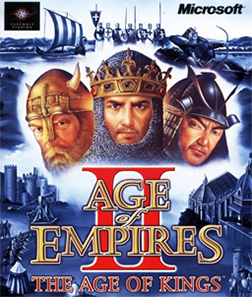
Age of Empires II: The Age of Kings is a real-time strategy video game developed by Ensemble Studios and published by Microsoft. Released in 1999 for Microsoft Windows and Macintosh in 2001, it is the second game in the Age of Empires series. The Age of Kings is set in the Middle Ages and contains thirteen playable civilizations. Players aim to gather resources, which they use to build towns, create armies, and defeat their enemies. There are five historically based campaigns, which conscript the player to specialized and story-backed conditions, as well as three additional single-player game modes; multiplayer is also supported.
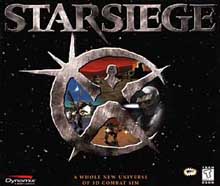
Starsiege is a mecha-style vehicle simulation game developed by Dynamix and released in 1999. Starsiege is set in the Metaltech/Earthsiege universe, which contains its predecessors Earthsiege (1994), Battledrome (1994), and Earthsiege 2 (1996). This universe also includes action game Hunter Hunted (1996), strategy games Mission Force: Cyberstorm (1996) and Cyberstorm 2: Corporate Wars (1998). It also includes the sequelsStarsiege: Tribes and all subsequent Tribes titles. In 2015, this game and the rest of the Metaltech/Tribes series were released as freeware by Hi-Rez Studios, but Battledrome and the Cyberstorm series were not.

Rebellion Developments Limited is a British video game developer based in Oxford, England. Founded by Jason and Chris Kingsley in December 1992, the company is best known for its Sniper Elite series and multiple games in the Alien vs. Predator series. Sister company Rebellion Publishing has published comic books since 2000, when it purchased 2000 AD, the publisher of characters such as Judge Dredd and Rogue Trooper.

Star Wars: Galactic Battlegrounds is a real-time strategy video game set in the Star Wars universe. It was developed by LucasArts. It was released in November 2001. An expansion pack, Clone Campaigns, was released on May 14, 2002, adding two new factions and campaigns. Later that year, both Galactic Battlegrounds and Clone Campaigns were released in a box set, Star Wars: Galactic Battlegrounds Saga.
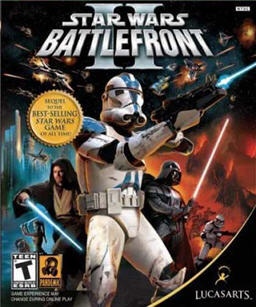
Star Wars: Battlefront II is a 2005 first and third-person shooter video game based on the Star Wars film franchise. Developed by Pandemic Studios and published by LucasArts, it is a sequel to 2004's Star Wars: Battlefront and the second installment in the Star Wars: Battlefront series. The game was released in PAL regions on October 28, 2005, on the PlayStation 2, PlayStation Portable (PSP), Microsoft Windows, and Xbox platforms, and in North America on November 1 of the same year. It was released on the PlayStation Store on October 20, 2009, for download on the PSP. The PSP version was developed by Savage Entertainment.

Master of Orion II: Battle at Antares is a 4X turn-based strategy game set in space, designed by Steve Barcia and Ken Burd, and developed by Simtex, who developed its predecessor Master of Orion and Master of Magic. The PC version was published by MicroProse in 1996, and the Macintosh version a year later by MacSoft, in partnership with MicroProse. The game has retained a large fan base, and is still played online.
Europa Barbarorum, or EB, is a modification of the PC game Rome: Total War (RTW) based on the desire to provide Rome: Total War players with a more historically accurate game experience.
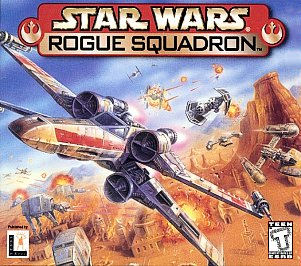
Star Wars: Rogue Squadron is an arcade-style flight action game co-developed by Factor 5 and LucasArts. The first of three games in the Rogue Squadron series, it was published by LucasArts and Nintendo and released for Microsoft Windows and Nintendo 64 in December 1998. The game's story was influenced by the Star Wars: X-wing – Rogue Squadron comics and is set in the fictional Star Wars galaxy, taking place primarily between events in the films Star Wars and The Empire Strikes Back. The player controls Luke Skywalker, commander of the elite X-wing pilots known as Rogue Squadron. As the game progresses, Skywalker and Rogue Squadron fight the Galactic Empire in 16 missions across various planets.
Star Wars: Battlefront is a series of first- and third-person shooter video games based on the Star Wars franchise. Players take the role of characters from the franchise in either of two opposing factions in different time periods of the Star Wars universe. The series was launched in 2004 by LucasArts with Star Wars: Battlefront, developed by Pandemic Studios for LucasArts. The game received positive reviews and sold well. In 2005 Pandemic developed a sequel, Star Wars: Battlefront II, which was also critically and commercially successful.

Warhammer 40,000: Dawn of War II is a real-time strategy-tactical role-playing video game developed by Relic Entertainment and published by THQ for Microsoft Windows based on the fictional Warhammer 40,000 universe. It is the sequel to the Warhammer 40,000: Dawn of War video game series. Dawn of War II was released in North America on February 19, 2009 and in Europe on February 20, 2009. A sequel, Warhammer 40,000: Dawn of War III, was released in April 2017.
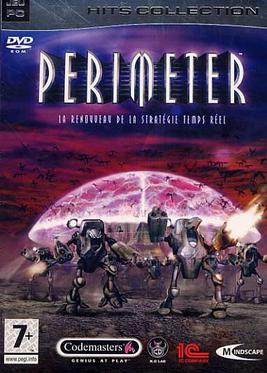
Perimeter is a real-time strategy video game developed by Russian studio K-D Lab for Windows. It is published by 1C Company and Codemasters, and was released in 2004.

Samurai Warriors 4, known in Japan as Sengoku Musou 4 (戦国無双4), is a hack and slash game by Koei Tecmo, and sequel to Samurai Warriors 3. Unlike past Samurai Warriors games, this one only has Japanese voice overs.

Stellaris is a 4X grand strategy video game developed by Paradox Development Studio and published by Paradox Interactive. In Stellaris, players take control of an interstellar civilization on the galactic stage and are tasked with exploring, colonizing, and managing their region of the galaxy, encountering other civilizations that they can then engage in diplomacy, trade, or warfare with. A large part of the game involves dealing with both scripted and emergent events, through which new empires alter the balance of power, powerful crises threaten the galaxy, or event chains tell the story of forgotten empires. It was released worldwide for Windows, macOS, and Linux on May 9, 2016 and for PlayStation 4 and Xbox One as Stellaris: Console Edition on February 26, 2019.

Metro Exodus is a 2019 first-person shooter game developed by 4A Games and published by Deep Silver. The game is the third installment in the Metro video game series, which is based on Dmitry Glukhovsky's novels. It is a sequel to Metro: Last Light and the book Metro 2035, and follows protagonist Artyom and his crew as they flee the Moscow Metro and set off with their allies on an intercontinental journey to the Far East on a locomotive called Aurora. The story takes place over a year, during which Artyom visits locations such as the Volga River and the Caspian Sea. The game improves on the gameplay mechanics of Last Light; it includes several miniature open world locations and has linear levels like earlier games in the series.

Iden Versio is a fictional character in the Star Wars franchise. She is the commander of Inferno Squad, a group of elite Imperial soldiers, who eventually defects to the Rebel Alliance. Iden is the player character of the 2017 video game Star Wars Battlefront II, an action shooter developed by EA DICE, in collaboration with Criterion Games and Motive Studios. She serves as the main protagonist of the game's single-player campaign, in which she is voiced and portrayed via motion capture by Janina Gavankar.


















